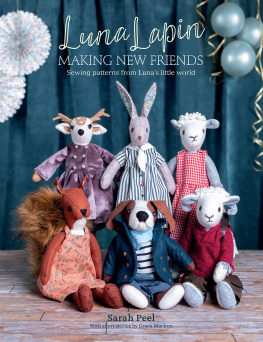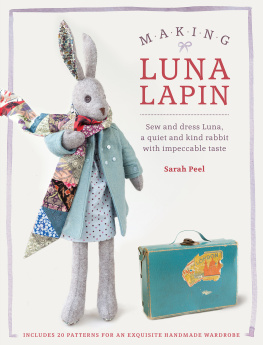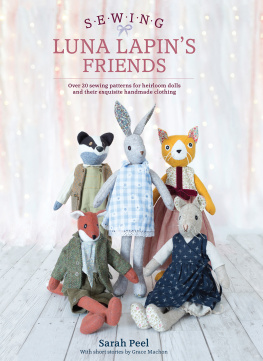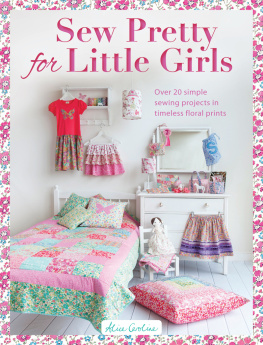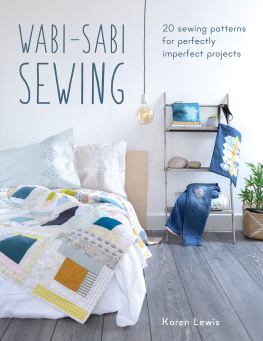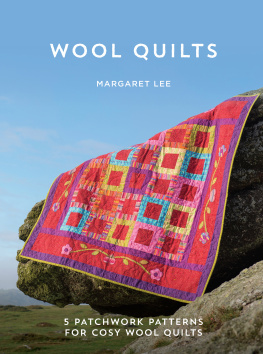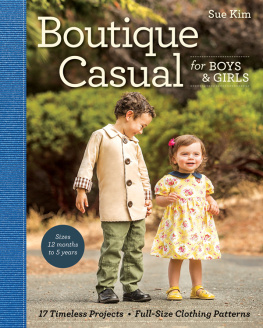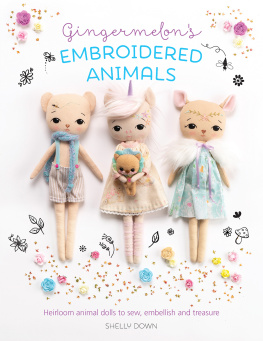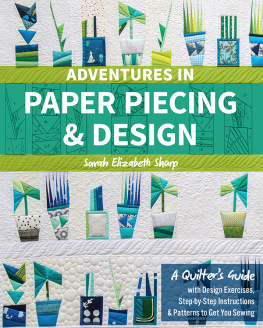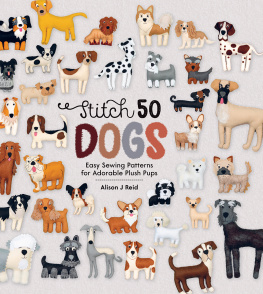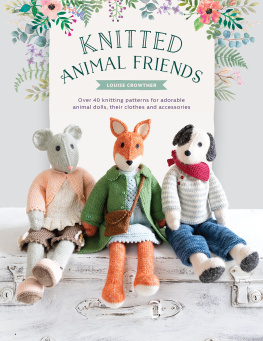Contents
Guide
Luna Lapin
MAKING NEW FRIENDS
Sewing patterns from Lunas little world
Sarah Peel
With short stories by Grace Machon

www.davidandcharles.com
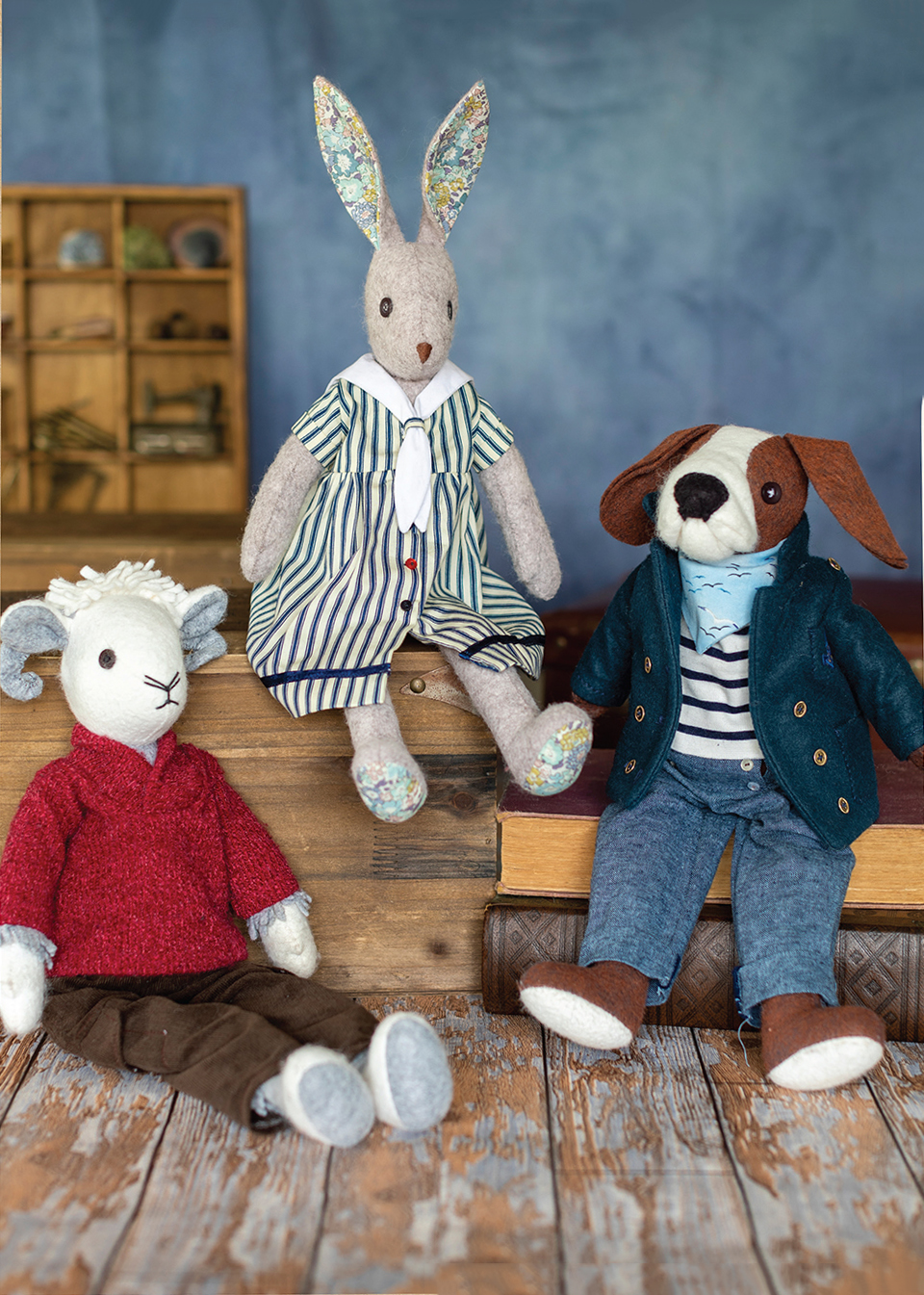
CONTENTS
Introduction
Welcome to Luna Lapins little world. Luna and all her friends are delighted to meet you. Inside these pages you will find easy to create characters and a wardrobe of beautiful, tiny tailored clothing. All of the clothes fit all of the animals (well, there might be a bit of tweaking for one huge fluffy tail, but lets not give Rowan Redtail a complex!).
If you are a long-standing Luna Lover, a heartfelt thank you from me and the team at CoolCrafting for all the support and encouragement you have shown this rabbity hare with her impeccable wardrobe and quiet, kind ways. Who would have thought that we would have reached a third book?
Luna is quite the celebrity in the crafting world and we like to think she is a byword for kindness. Luna is far more than a very sweet felt rabbit. She has become a conduit for friendships all over the world, and a whole community of creative stitchers have come together to offer advice and inspiration on our Facebook group, Luna Lapins Little World.
This book is a doorway to creating your own heirlooms, whether they are close to our originals or adapted with your own quirks and variations. So, trust in me and enter a magical land of slowly stitched kindness and creativity.
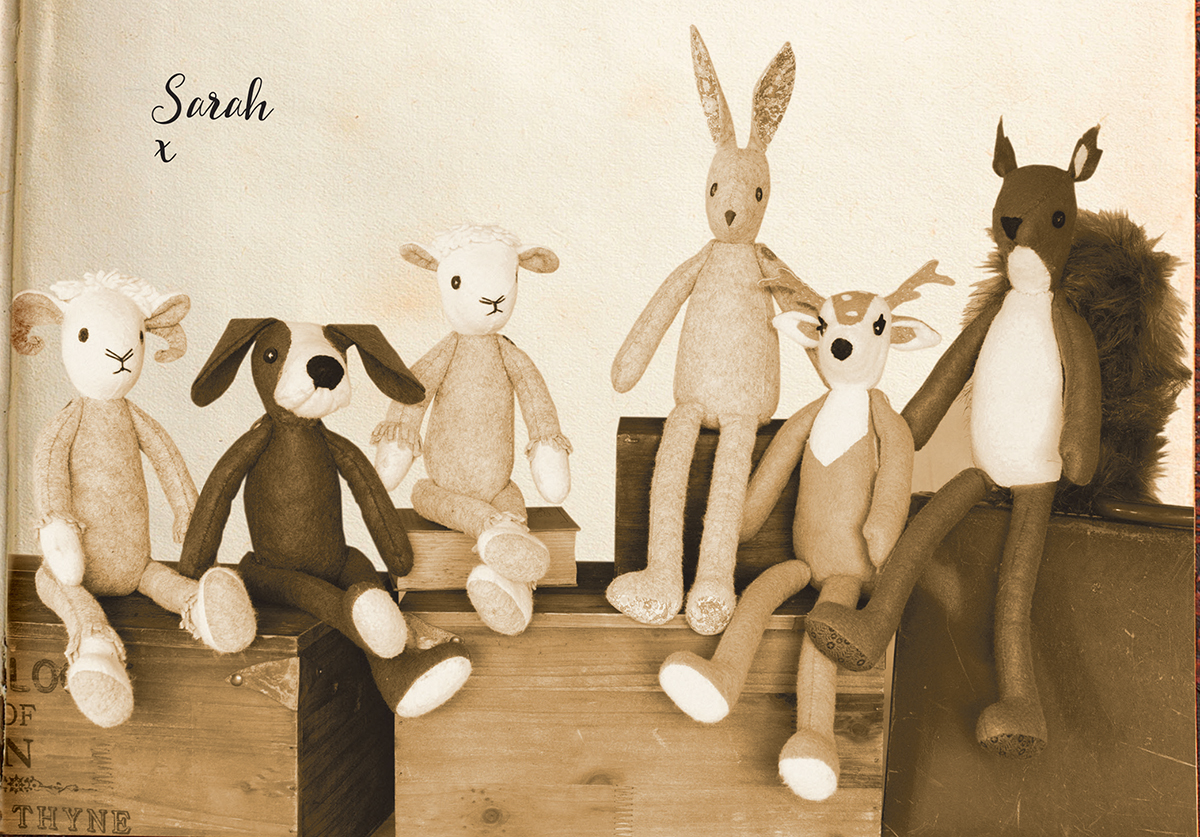
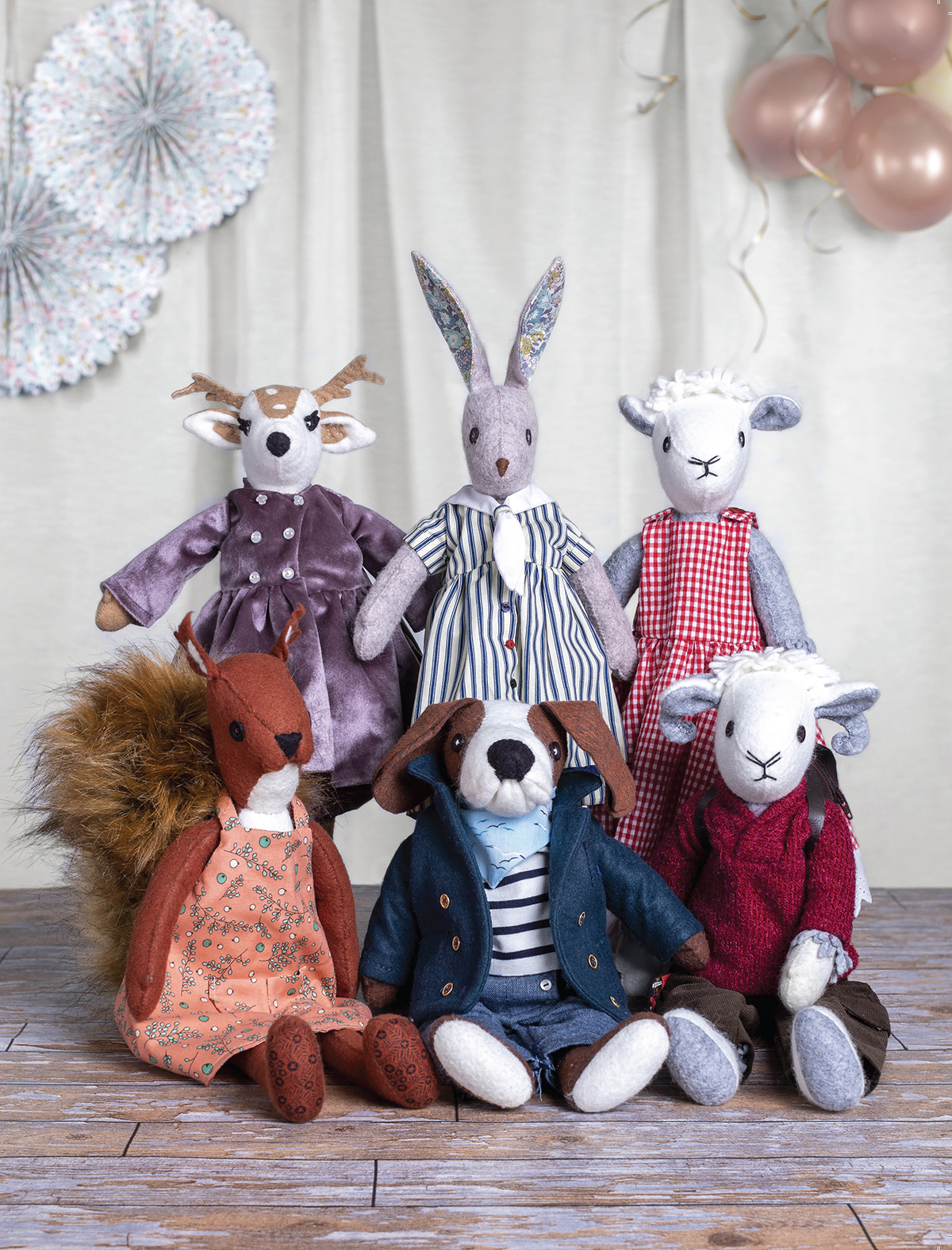
Materials
This section describes the materials and equipment you will need to make the projects in this book.
BASIC SEWING KIT
You will need some general supplies for making the projects in the book, including the following:
- Selection of needles, including sewing needle, tapestry needle, darner needle and doll needle (for sewing on arms)
- Sewing threads to suit projects, including embroidery threads
- Pins, safety pins and fabric clips
- Sharp scissors for fabric and scissors for paper
- Fabric marker (e.g. water-soluble pen or chalk)
- Adhesive tape (for joining pattern pieces)
- Turning tool for pushing out small shapes (if you dont own one, a knitting needle or chopstick will do)
- Iron and pressing cloth
- Sewing machine
BEFORE YOU START
Before starting a project, look at the You Will Need list for the project and gather your supplies. Give yourself enough space and time to work this really does help eliminate mistakes. Read through all of a projects instructions first and highlight any areas that you will need to focus on more than the simpler parts. Press fabric with a suitable iron temperature to ensure it is flat and easy to work with (see ).
FABRICS
Various fabric types have been used for the projects in the book and this section gives some advice on using them.
Felt
Felt is possibly the perfect crafting material. The felt I am referring to in this book is a flat fabric-like felt, not what you would use for needle-felting or wet felting. Felt is not a woven fabric, but is formed by the agitation of fibres and therefore will not fray when you cut it. This allows you to cut a shape that can be appliqued, or sewn to the outside of a project. However, not all felts are made equal, so if possible choose a felt that has wool in it, and look for a thickness of about 1.5mm (116in) definitely no thicker. I adore the softly marled tones of the felts that are used for Luna and her friends, which are a wool and rayon blend (see ). Felt doesnt have a grain to the material, so you can move your pattern pieces around to get the most out of your felt.
Corduroy
Corduroy is a fabric that has a luxurious look and feel. The fabric is made up of ribs of tufted fibres, called wales. Colours seem to glow in corduroy; think of it as a practical, everyday velvet. As with all of Luna and her friends projects, its important to think of their scaled down world, so choose a fine needlecord (one that has 14 wales per inch or higher).
Printed Fabrics
Cotton tends to be more stable than other fabric compositions and therefore will give you more control when you are sewing these small items. Choose prints that work with the scale of the garment thats why I love the ditsy prints you will see in some of the projects. Choose fabrics that are lightweight without being delicate a quilting weight is about as heavy as you should select.
Knitted and Jersey Fabrics
This category encompasses a huge number of fabric types that share a common characteristic they stretch, ideal for making simple over-the-head tops for our small friends, such as Hughs matelot top. If this is your first time using stretch fabrics, try cutting up an old T- shirt to have a go.
When cutting out knitted or jersey fabrics, the stretch needs to go across the pattern pieces. To maintain the stretch in the garment, use a small zigzag or stretch stitch. A ballpoint or jersey needle prevents fibre damage and laddering but is not essential for such small garments. The nature of the fabric means seams do not need to be finished or pressed flat.
Velvet
Velvet, like corduroy, has a pile but the even cut of this woven tufted fabric creates a flat, smooth surface. Velvet has a soft feel and a beautiful glow, making colours look even richer. It works well in loose, softly gathered shapes such as Freyas opera coat, but I wouldnt advise its use for small-scale garments that have a lot of detail.
Velvet has a tendency to shift and creep under your machine foot, so always prepare your seams well with tacking (basting). Changing the pressure on your machine foot will also help cope with this bulkier fabric. Velvet can be quite springy, so dont worry too much about pressing, and if you do need to press, use a scrap piece of velvet pile-side down as a pressing cloth.
Taffeta
Taffeta is a smooth surfaced cloth often associated with occasionwear. Very often it is woven with two different coloured threads (shot taffeta), resulting in a material that changes colour depending on angle or light, so it is important to be careful to keep your right and wrong sides consistent.
Be prepared for taffeta to shift as you cut and sew it, because of its smooth surface. Use a nice sharp needle on your machine, a little finer than normal (6080 range) and do overlock or zigzag stitch your cut edges as this fabric frays easily.
Faux Leather / Pleather
These leather-look fabrics have a smooth surface that is slightly tacky to the touch. Made from a polyurethane surface bonded to a woven fabric back, faux leather (also called pleather) is an economical, vegan-friendly alternative to leather. (For a plastic-free alternative, look out for pinatex, a faux leather made from waste pineapple leaves.) Because the top layer on faux leather is not woven, the edges of this fabric wont fray, making it perfect for small accessories for Luna and her friends boots, shoes and even tiny backpacks.

